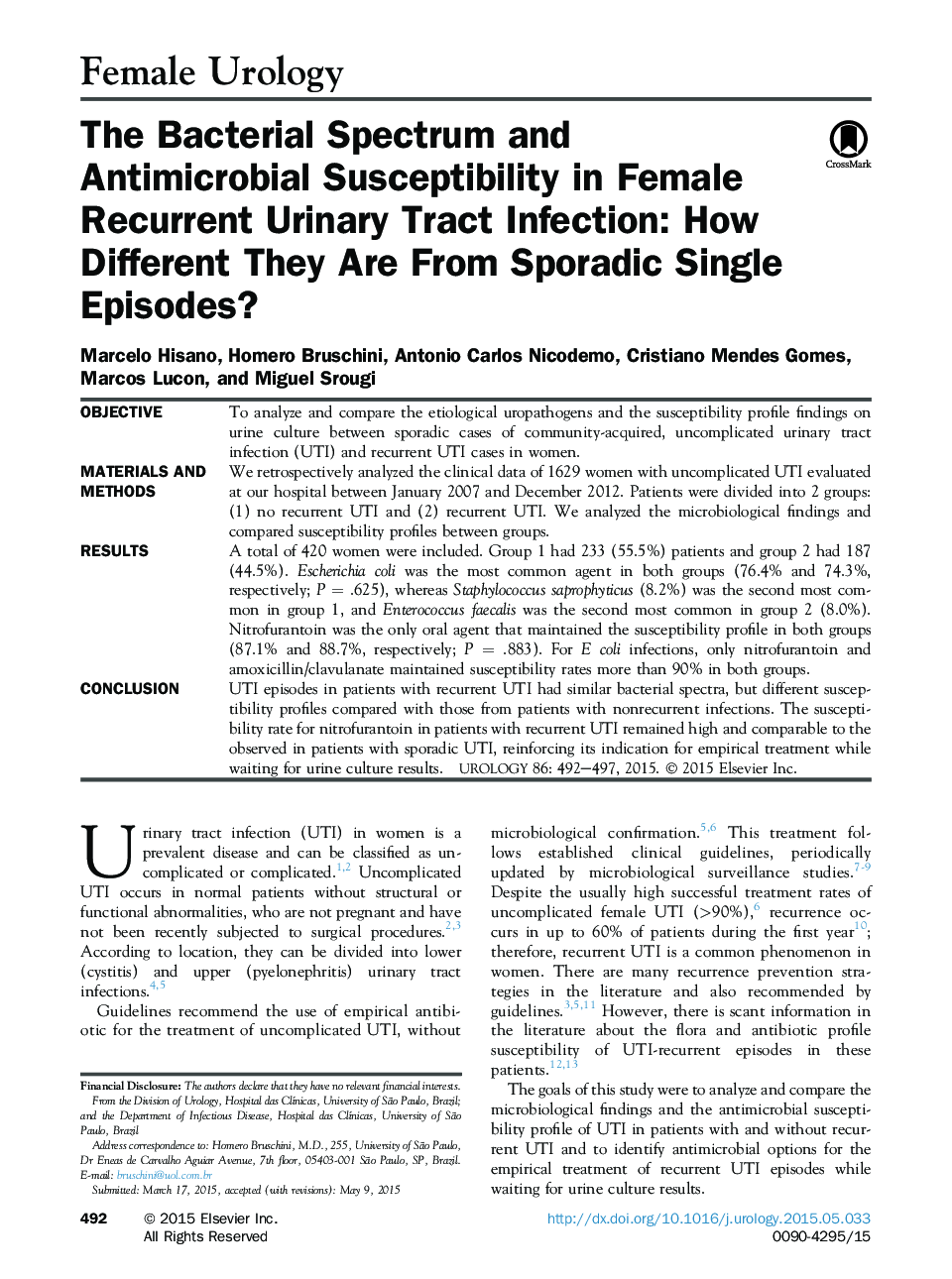| Article ID | Journal | Published Year | Pages | File Type |
|---|---|---|---|---|
| 6166973 | Urology | 2015 | 6 Pages |
ObjectiveTo analyze and compare the etiological uropathogens and the susceptibility profile findings on urine culture between sporadic cases of community-acquired, uncomplicated urinary tract infection (UTI) and recurrent UTI cases in women.Materials and MethodsWe retrospectively analyzed the clinical data of 1629 women with uncomplicated UTI evaluated at our hospital between January 2007 and December 2012. Patients were divided into 2 groups: (1) no recurrent UTI and (2) recurrent UTI. We analyzed the microbiological findings and compared susceptibility profiles between groups.ResultsA total of 420 women were included. Group 1 had 233 (55.5%) patients and group 2 had 187 (44.5%). Escherichia coli was the most common agent in both groups (76.4% and 74.3%, respectively; PÂ = .625), whereas Staphylococcus saprophyticus (8.2%) was the second most common in group 1, and Enterococcus faecalis was the second most common in group 2 (8.0%). Nitrofurantoin was the only oral agent that maintained the susceptibility profile in both groups (87.1% and 88.7%, respectively; PÂ = .883). For E coli infections, only nitrofurantoin and amoxicillin/clavulanate maintained susceptibility rates more than 90% in both groups.ConclusionUTI episodes in patients with recurrent UTI had similar bacterial spectra, but different susceptibility profiles compared with those from patients with nonrecurrent infections. The susceptibility rate for nitrofurantoin in patients with recurrent UTI remained high and comparable to the observed in patients with sporadic UTI, reinforcing its indication for empirical treatment while waiting for urine culture results.
